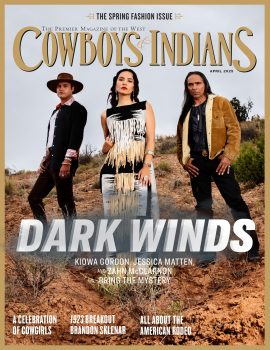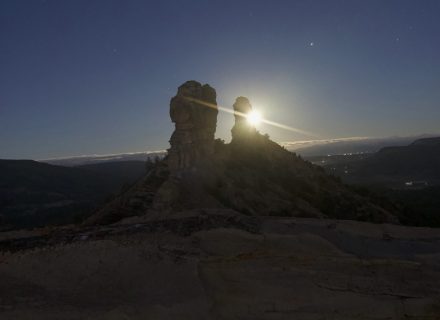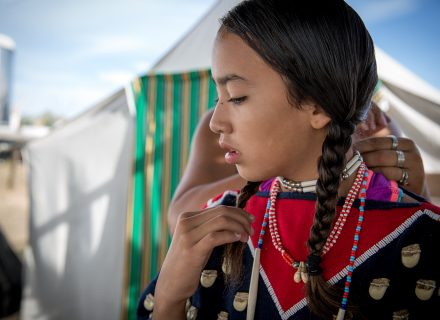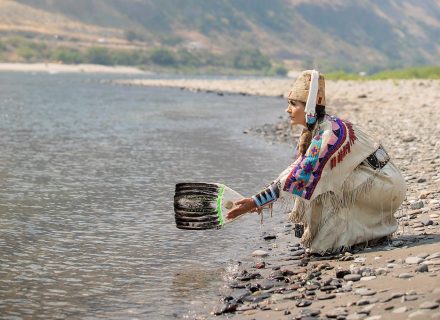Destinations rich with Indigenous culture and history can enhance any travel experience, but it’s important to proceed with reverence to and knowledge of protocols.
When visiting sites of cultural and historical significance for Native Americans, it’s important to understand and observe boundaries. That’s common sense, of course, and it’s a message reinforced by Sherry Rupert (Paiute/Washoe), the CEO of the American Indian Alaska Native Tourism Association (AIANTA).
“If somebody is thinking about visiting one of our Native nations — and communities are one of their destinations or experiences — it’s always good to do some research before they come out,” Rupert said. This code of conduct could mean simply paying attention to signage put up by stakeholders, requesting permission to record an event or activity, or not picking up or removing artifacts or objects. Rules vary by site, of course. Tribal nations are attempting to balance community and tradition while providing visitors with positive experiences, Rupert says.
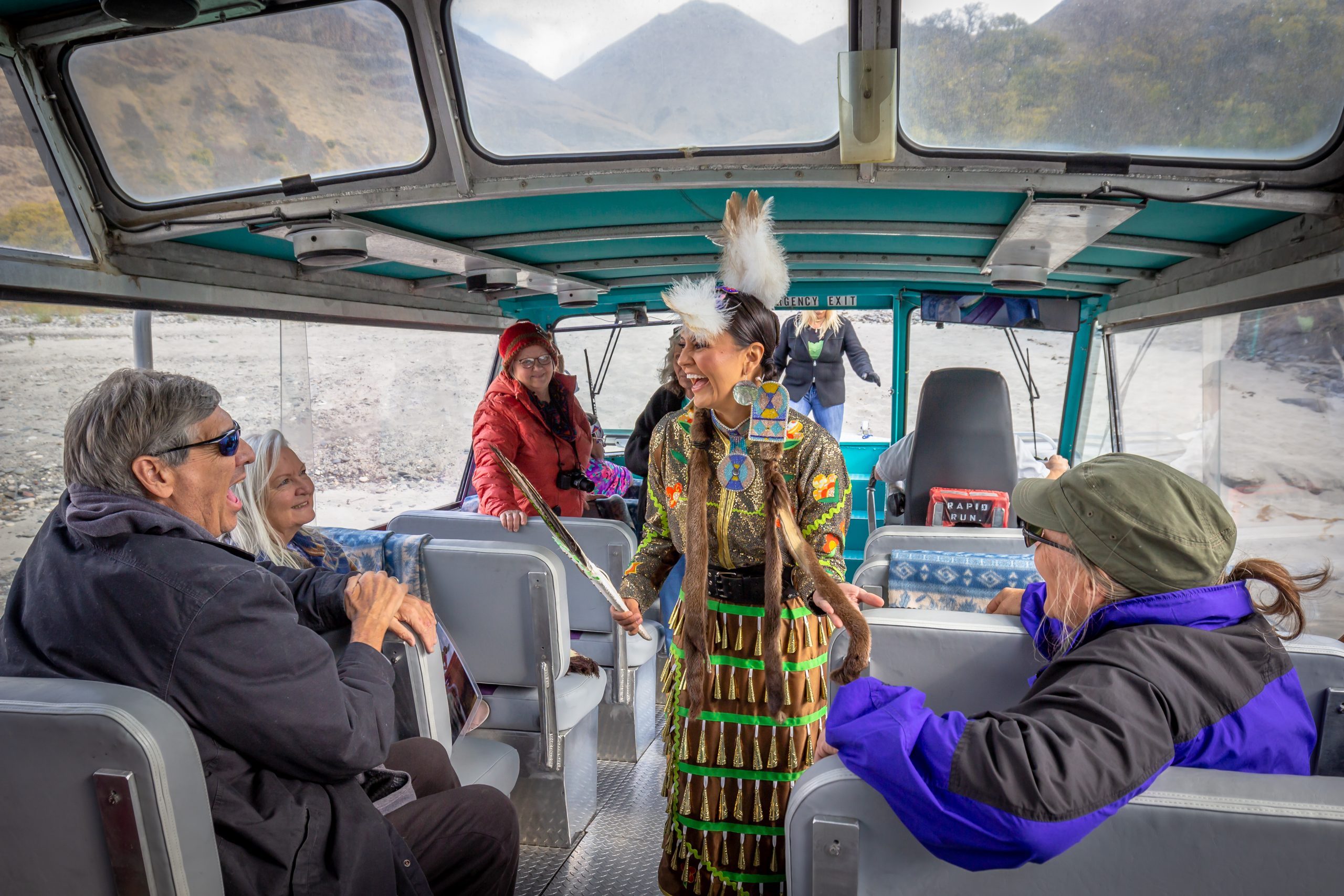 A trek through Idaho’s Nimiipuu (Nez Perce) Country (PHOTOGRAPHY: Courtesy Nez Perce Tourism).
A trek through Idaho’s Nimiipuu (Nez Perce) Country (PHOTOGRAPHY: Courtesy Nez Perce Tourism).
In many cases, particularly with museums — including the Smithsonian’s National Museum of the American Indian and the Five Civilized Tribes Museum in Muskogee, Oklahoma — photos are permitted unless otherwise noted. There are exceptions, though, so it’s important to pay attention. At Mesa Verde National Park in southwest Colorado, visitors can immerse themselves in Native American culture, including one of the best-preserved sites of ancestral Puebloans. But leave your drones at home. They are prohibited according to rules posted on the park website.
“A lot of times, the tribes on their websites will have information on their expectations for visitors and any permits they might need to purchase, so everybody understands way ahead of time what is expected of them — because there is a difference between public lands and tribal lands or Native homelands,” says Rupert, who has spent nearly two decades promoting Native American tourism.
 Chief Son-I-Hat’s Whale House at the Historic Haida Village of Kasaan in Alaska (PHOTOGRAPHY: Courtesy Historic Haida Village).
Chief Son-I-Hat’s Whale House at the Historic Haida Village of Kasaan in Alaska (PHOTOGRAPHY: Courtesy Historic Haida Village).
Rupert’s nonprofit organization (AIANTA) is helping tourists with its online guide, NativeAmerica.travel, a website that shares experiences available to travelers throughout Indian Country. The site is a valuable travel and planning tool that breaks up the United States into 12 regions. It highlights various travel experiences from arts and culture to living history to historical landmarks. The itinerary section suggests various themed visits. There are also maps, calendars, blog posts spotlighting events, and most importantly, practical guidelines to apply to any journey.
“I think it’s very easy to [make a] misstep because we’re all so used to pulling out our cell phones and taking a video or a photo,” she says. “And so, we just have to be aware of that in some places on Native lands. That is not allowable.”
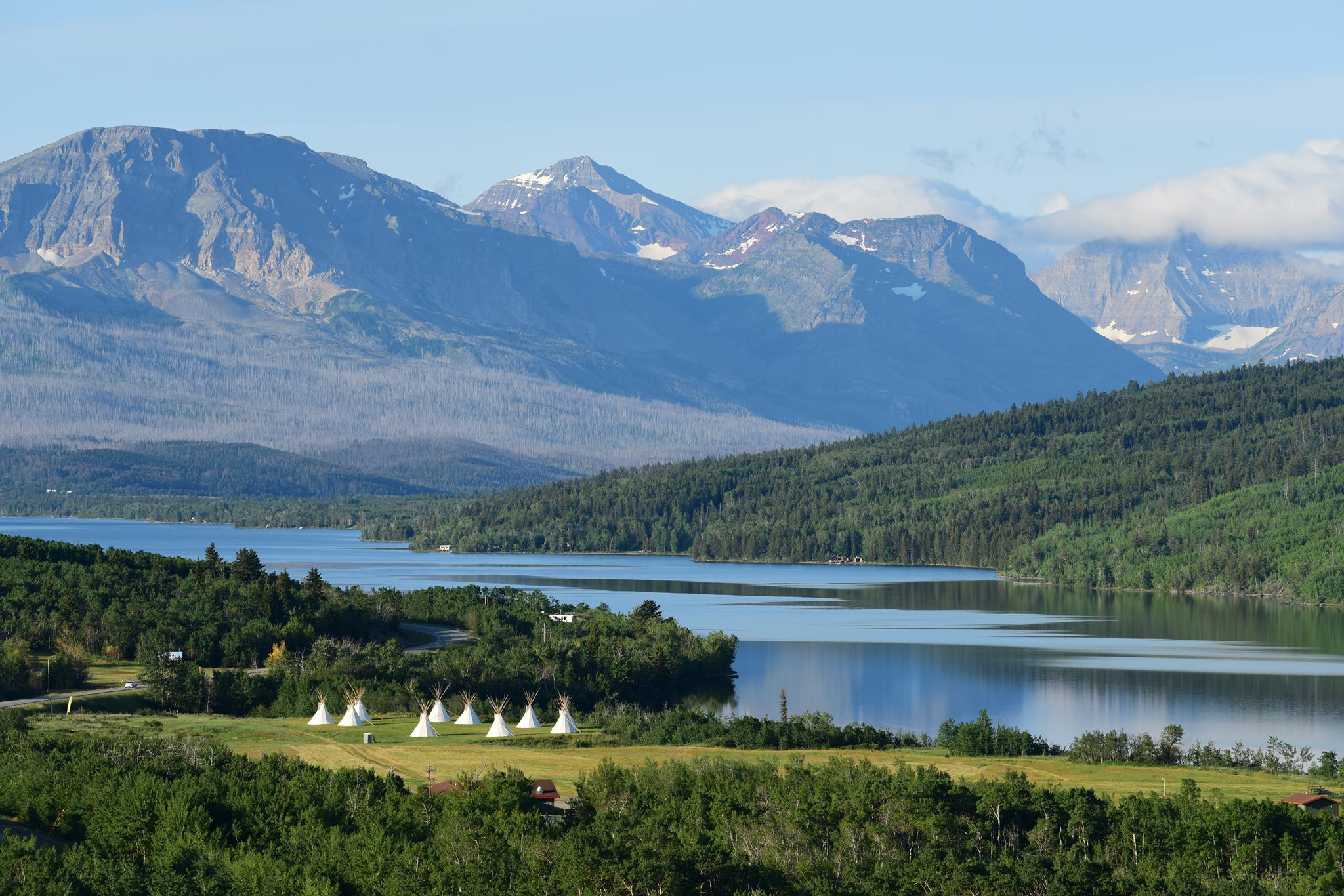 Campgrounds at Montana’s Blackfeet Nation (PHOTOGRAPHY: Courtesy Blackfeet Nation).
Campgrounds at Montana’s Blackfeet Nation (PHOTOGRAPHY: Courtesy Blackfeet Nation).
Rupert found this out for herself on a visit to New Mexico. “I’m not from New Mexico. And when I came here, I wanted to learn all about the Pueblos of New Mexico,” she says. “So, I had been invited out to the different feast days and ceremonies for a few of the Pueblos, and one of the things I noticed right away is that there were signs, ‘no cameras, ‘no filming,’ that type of thing. And I thought, ‘Oh, OK. Yeah, no cameras, no filming.’ But I very soon realized that they mean no phones, no cameras, no filming, and they have people in the crowd, and they’re looking for people either acting out of habit or filming something that they’re not supposed to.
“They would come around and take those cell phones and keep them. And I thought, ‘Wow, wow.’ But then I realized that it’s really up to that particular Pueblo how they want to handle visitors coming to their lands. And [there are] things that they want to keep sacred. They [do so by having] these rules or these policies in place for their visitors.”
 The Canoe Building of California’s Yurok Tribe (PHOTOGRAPHY: Courtesy Yurok Tribe).
The Canoe Building of California’s Yurok Tribe (PHOTOGRAPHY: Courtesy Yurok Tribe).
She saw another perspective when she worked as Indian affairs director for the state of Nevada. A TV production crew asked several times to shoot a ghost-hunting show at the site of a boarding school. Rupert declined each request. “I would refuse because we believed we didn’t want to unsettle the spirits. Just let them be, let them rest,” Rupert says. “So, I actually had to work with the state of Nevada to ensure that they supported my decision as well. So that way, when they got a call from one of these entities, they would decline as well.”
Increased representation of Native Americans in mainstream media has also fueled greater interest in tourism. Killers of the Flower Moon and the Hulu television series Reservation Dogs are two of the higher-profile productions about Native Americans that have prompted an uptick in visits to Oklahoma. Killers, the Martin Scorsese-directed film that was nominated for multiple Academy Awards, has attracted tourists to several sites throughout the Osage Nation. The state director of tourism reminded visitors in the upswing to be respectful.
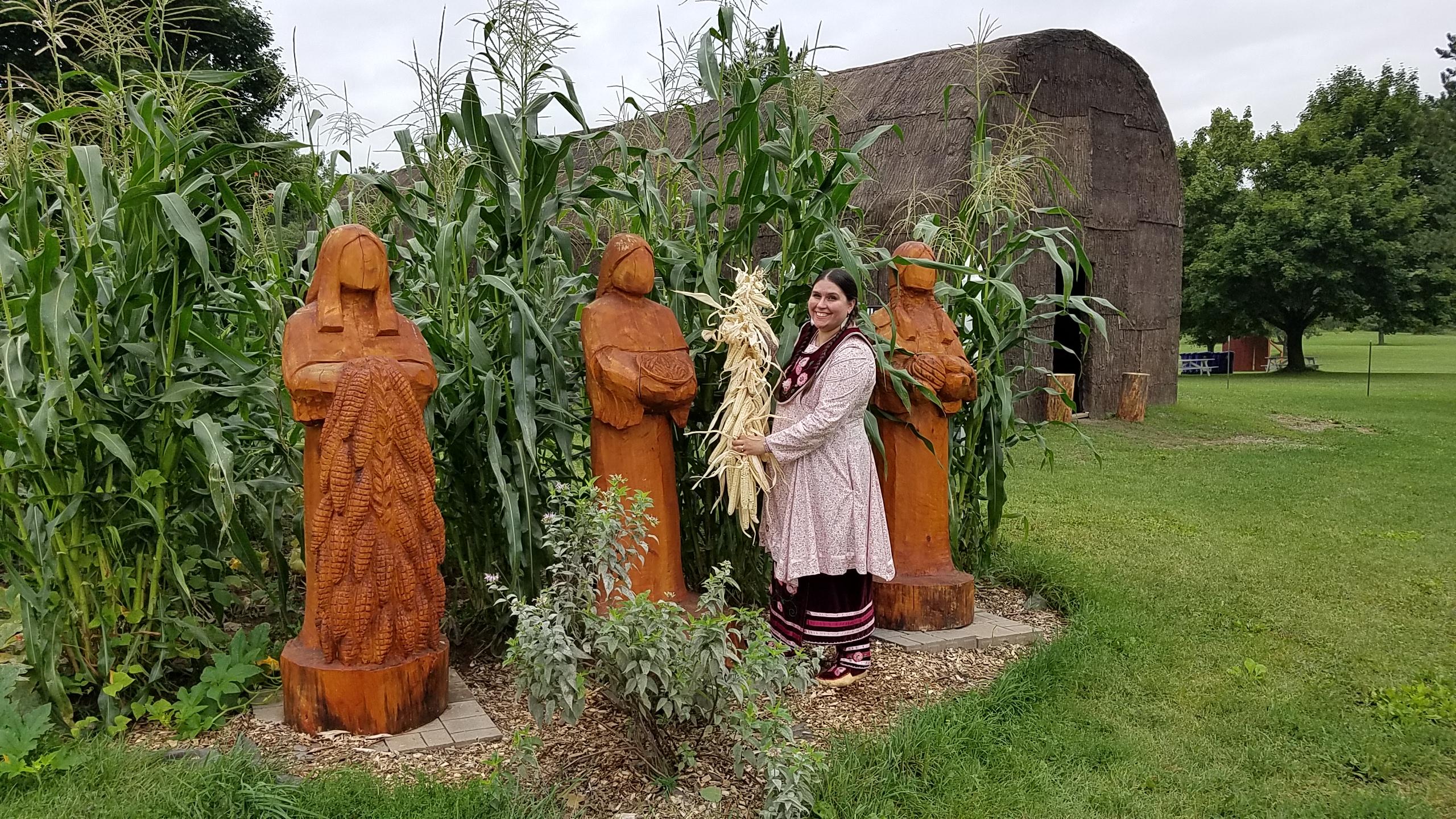 Oneida Nation of Wisconsin’s Walk of Legends (PHOTOGRAPHY: Courtesy Oneida of Wisconsin Tourism).
Oneida Nation of Wisconsin’s Walk of Legends (PHOTOGRAPHY: Courtesy Oneida of Wisconsin Tourism).
“As we welcome visitors to Osage County to learn more about this history, it’s important to remind everyone of how they can be respectful to the land, the people, and the historic sites,” Shelley Zumwalt, executive director of the Oklahoma Tourism and Recreation Department, said in a statement last year.
Rupert worked with Congress to pass the Experience: Native American Tourism and Improving Visitor Experience (NATIVE) Act in 2016, which boosted the coordination and sharing of resources between communities and the Federal government. She believes Native American tourism is now at an all-time high. “People are very interested in knowing more; we have a lot of time to sit and think about what is important to us — and it’s no longer just an Instagram photo.
“It is understanding people, understanding culture, and visiting them and seeing them where they are. And so, we’re definitely seeing that trend in that momentum for Indigenous tourism in this country.”
Begin With The Basics
Readers of NativeAmerica.travel will be reminded of the general protocols, no matter the tribe or region being visited:
- Be attentive to signage and obey individual tribal rules and regulations.
- Weapons, drugs, and misuse of alcohol will not be tolerated.
- Respect the privacy of residential communities.
- Ask before photographing or recording an individual, an event, or an activity.
- Do not pick up or remove artifacts or objects.
- Burial grounds and religious ceremonies are sacred and are not to be entered.
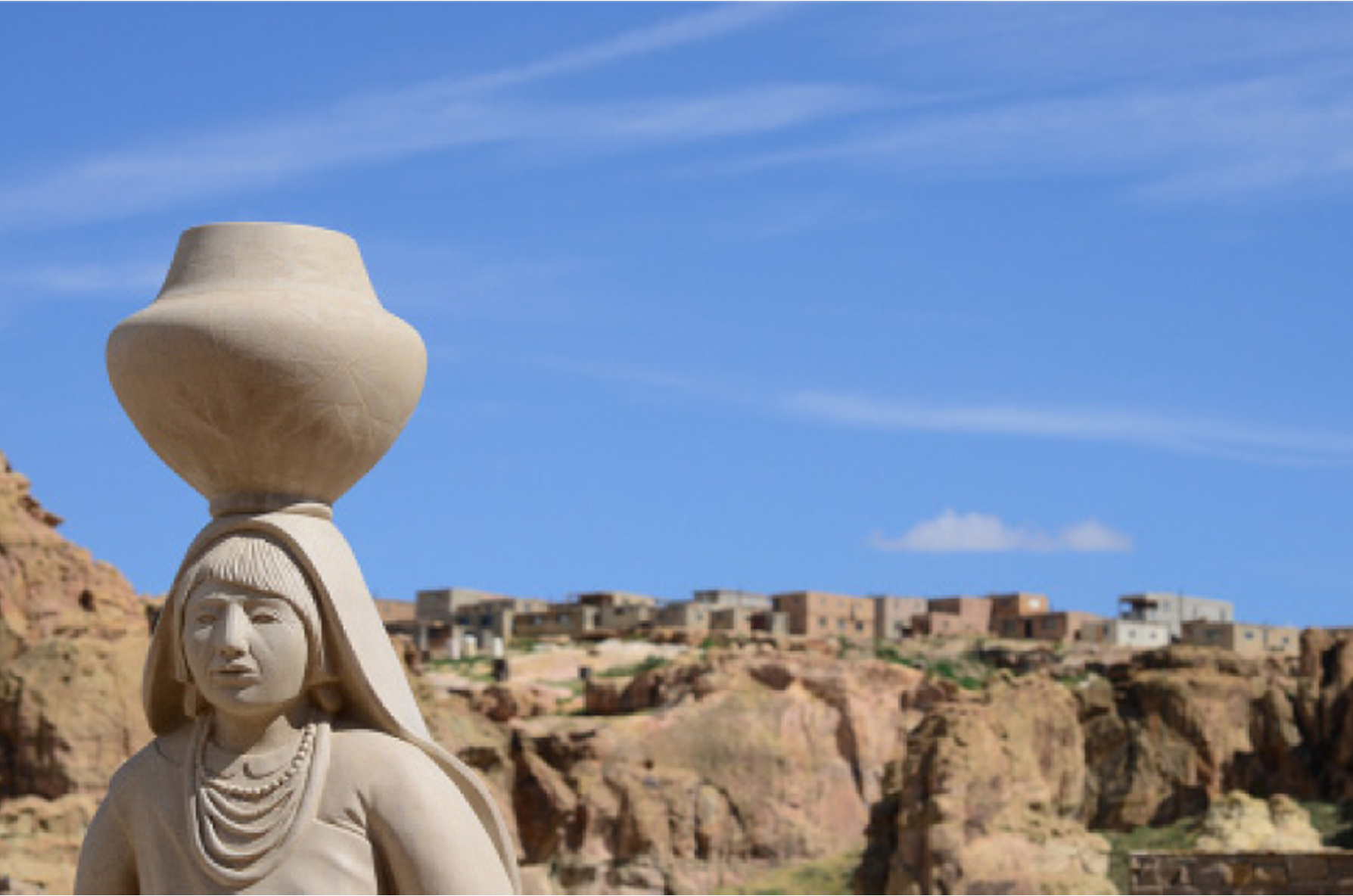 Acoma Pueblo Sculpture (PHOTOGRAPHY: Courtesy Sky City Cultural Center).
Acoma Pueblo Sculpture (PHOTOGRAPHY: Courtesy Sky City Cultural Center).
Visit NativeAmerica.travel for more information on protocols and codes for traveling to Indigenous lands and sites.
From our July 2024 issue.
HEADER IMAGE: Blackfeet Tipi Camp in MT (PHOTOGRAPHY: Courtesy Bruce Rettig)













